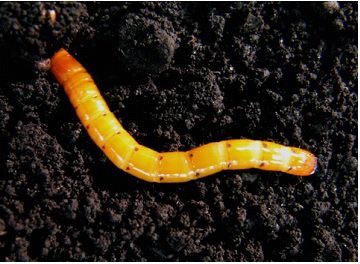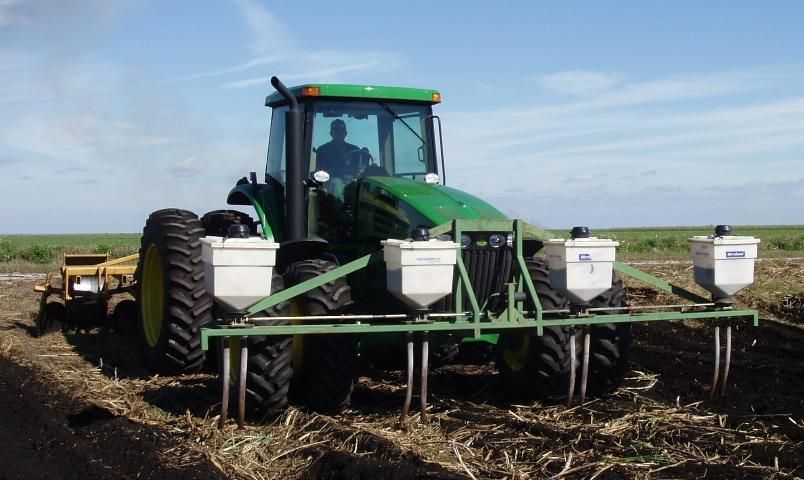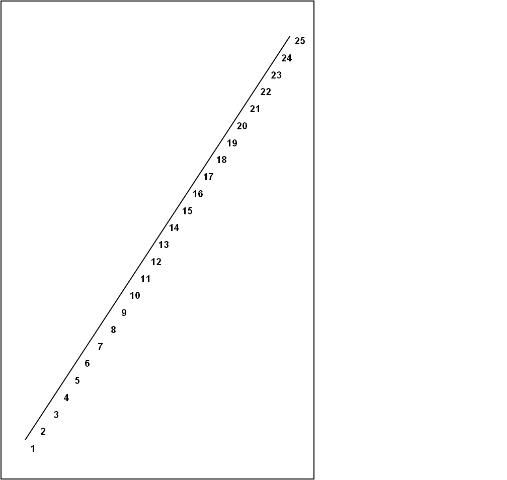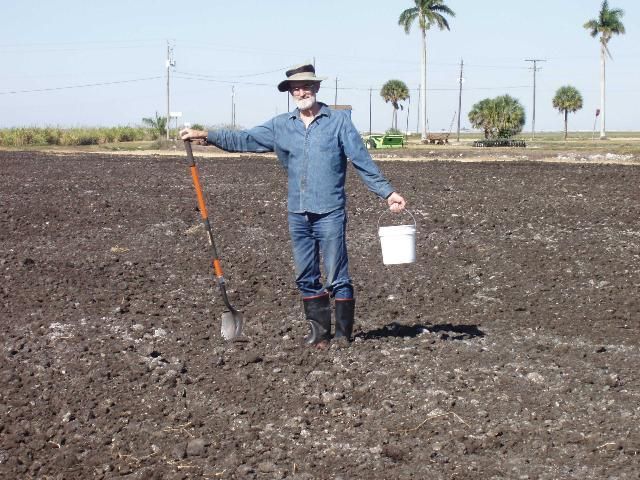Introduction
Sugarcane is planted on approximately 410,000 acres of muck and sandy soils in the Everglades Agricultural Area located in southern Florida (Rice et al. 2015). Seed cane is most vulnerable following planting, with a host of adverse abiotic conditions, diseases, and insect pests threatening germination and establishment in the soil. The most economically important insect pests of newly planted sugarcane in Florida are wireworms (Coleoptera: Elateridae). Species of wireworms occurring in Florida sugarcane include the corn wireworm, Melanotus communis (Gyllenhal) (Figure 1), Conoderus spp., Glyphonux bimarginatus Schaeffer, Limonius dubitans LeConte, and Ischiodontus spp. (Hall 1988; Cherry and Stansly 2008); however, M. communis has been documented to cause the most damage to Florida sugarcane (Cherry and Stansly 2008). While wireworms are present in ratoon sugarcane, populations rarely cause economically significant losses to the established crop.

Credit: Ron Cherry, UF/IFAS
A combination of cultural, biological, and chemical control practices is recommended for management of wireworms in newly planted sugarcane. Cultural control practices include flooding fallow and rice fields to kill larvae in the soil and reduce egg-laying (Hall and Cherry 1993), and weed management to reduce availability of non-crop hosts (Rainbolt and Cherry 2008). While a number of organisms have been identified as potential parasitoids of wireworms in sugarcane fields, their impact is minor. Cattle egrets and other aquatic birds have been observed feeding on wireworms exposed at the surface of the soil following disking.
The primary method of control of wireworms in newly planted sugarcane is the use of soil insecticides (Figure 2); however, a sampling plan should be implemented prior to treatment. The following sequential sampling methodology for wireworms in newly planted sugarcane provides a step-by-step plan to determine if an application of soil insecticide may be needed for wireworm control.

Credit: Ron Cherry, UF/IFAS
Sequential Sampling Methodology
Sampling for wireworms should be conducted following preparation of the field for planting (after final disking). In addition to preparing the soil for planting, disking reduces wireworm populations in the field by means of mechanical injury and exposure to the soil surface, which leads to desiccation and bird predation. Wireworm samples should be collected along a diagonal transect running the length of the field (Figure 3). Sampling should begin and end 25 m from the field margin to reduce any edge effects. Each transect should be divided into 25 evenly spaced sampling locations. For sampling, one person uses a shovel to remove approximately 1 ft3 of soil, which is piled on the adjacent ground and sorted through for two minutes with the shovel or by hand (Figure 4). The number of wireworms removed per sample is recorded. Two people can process the equivalent sample in approximately two minutes. Cherry and Stansly (2008) reported that 91% of wireworms sampled in muck soils in Florida sugarcane were either M. communis or Conoderus spp., both pests of sugarcane. For simplicity, wireworms can be counted without regard to species or size. Refer to EDIS publication ENY-665 for further information on wireworm identification in sugarcane (Cherry 2014).


Credit: Ron Cherry, UF/IFAS
The number of samples collected from the field will depend on the total number of wireworms found in the samples. Once a total of 9 or more wireworms have been recorded, sampling may be discontinued in that transect, and a treatment of soil insecticides should be considered. If fewer than 9 wireworms were recorded after 25 samples, soil insecticides may not be required.
Conclusion
Using this sequential sampling technique will allow growers to better predict wireworm infestation levels in fields prior to sugarcane planting, which in turn will aid in determining whether or not an insecticide application may be necessary. A high variability of wireworm infestations exist in Florida sugarcane, and significant populations have been recorded in both muck and sandy soils (Cherry and Stansly 2008), further demonstrating the practicality of a sequential sampling plan in sugarcane fields at planting. Preventing unnecessary application of soil insecticides will reduce production costs and exposure of toxic material to humans and the environment. Cherry et al. (2013) estimated a savings of $40/acre by eliminating unnecessary applications of soil insecticides in fields sampled in that study. However, it must be noted that several other factors in addition to wireworm distribution may be variable when this threshold is used to predict losses, including price of sugar, price of labor, competency of workers, price of insecticides, and varietal differences. Hence, sugarcane growers trying this sampling method do so at their own risk.
References
Cherry, R. 2014. Wireworms in Florida sugarcane. UF/IFAS EDIS Publication ENY-665.
Cherry, R., P. Grose, and E. Barbieri. 2013. "Validation of a sequential sampling plan for wireworms (Coleoptera: Elateridae) at sugarcane planting." J. Pest Science. 86: 29‒32.
Cherry, R., and P. Stansly. 2008. "Abundance and spatial distribution of wireworms (Coleoptera: Elateridae) in Florida sugarcane fields on muck versus sandy soils." Florida Entomol. 91: 383‒387.
Hall, D. 1988. "Insects and mites associated with sugarcane in Florida." Florida Entomol. 71: 130‒150.
Hall, D., and R. Cherry. 1993. "Effect of temperature on flooding to control the wireworm Melatonus communis (Coleoptera: Elateridae)." Florida Entomol. 76: 155‒160.
Rainbolt, C., and R. Cherry. 2008. "Effect of weed control on wireworm (Coleoptera: Elateridae) populations in fallow fields in southern Florida." J. Entomol. Science. 43: 138‒140.
Rice, R., L. Baucum, and W. Davidson. 2015. "Sugarcane variety census: Florida 2014." Sugar Journal. 78: 8‒16.